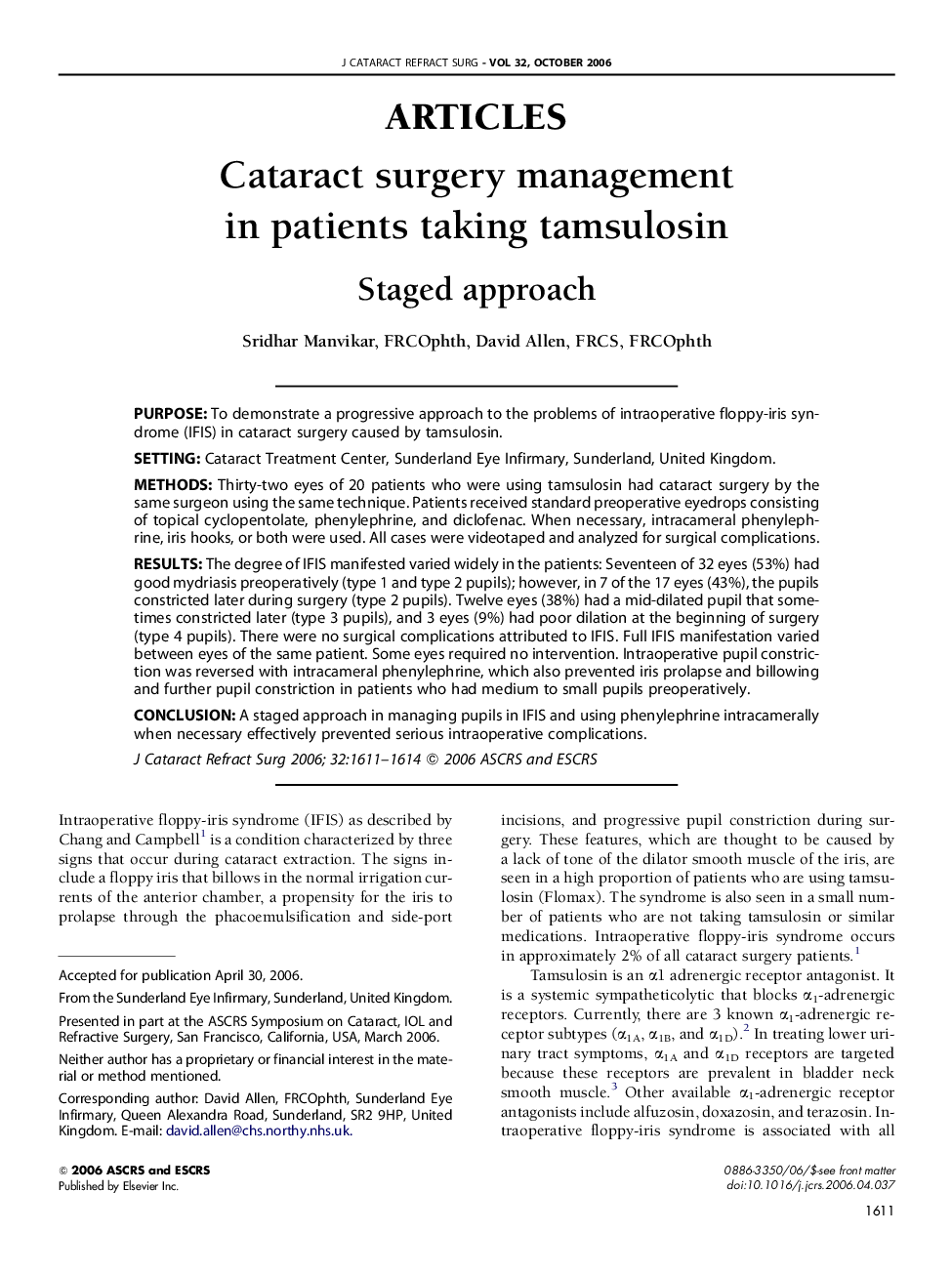| Article ID | Journal | Published Year | Pages | File Type |
|---|---|---|---|---|
| 4022253 | Journal of Cataract & Refractive Surgery | 2006 | 4 Pages |
PurposeTo demonstrate a progressive approach to the problems of intraoperative floppy-iris syndrome (IFIS) in cataract surgery caused by tamsulosin.SettingCataract Treatment Center, Sunderland Eye Infirmary, Sunderland, United Kingdom.MethodsThirty-two eyes of 20 patients who were using tamsulosin had cataract surgery by the same surgeon using the same technique. Patients received standard preoperative eyedrops consisting of topical cyclopentolate, phenylephrine, and diclofenac. When necessary, intracameral phenylephrine, iris hooks, or both were used. All cases were videotaped and analyzed for surgical complications.ResultsThe degree of IFIS manifested varied widely in the patients: Seventeen of 32 eyes (53%) had good mydriasis preoperatively (type 1 and type 2 pupils); however, in 7 of the 17 eyes (43%), the pupils constricted later during surgery (type 2 pupils). Twelve eyes (38%) had a mid-dilated pupil that sometimes constricted later (type 3 pupils), and 3 eyes (9%) had poor dilation at the beginning of surgery (type 4 pupils). There were no surgical complications attributed to IFIS. Full IFIS manifestation varied between eyes of the same patient. Some eyes required no intervention. Intraoperative pupil constriction was reversed with intracameral phenylephrine, which also prevented iris prolapse and billowing and further pupil constriction in patients who had medium to small pupils preoperatively.ConclusionA staged approach in managing pupils in IFIS and using phenylephrine intracamerally when necessary effectively prevented serious intraoperative complications.
